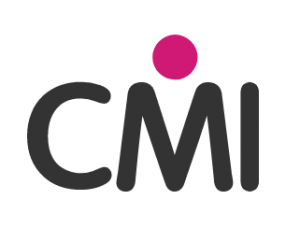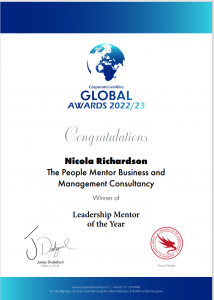Hi, I’m Nicola, The People Mentor. In today’s podcast, I want to explore how to Increase Productivity in Your SME team to achieve the results you want.”
This podcast is dedicated to helping you, as a team leader, optimise the productivity of your small or medium-sized enterprise (SME) team.
As a leader, you are responsible for ensuring that your team is working efficiently and effectively to meet the goals and objectives of your organisation.
However, with limited resources and a never-ending workload, it can be challenging to find the time and energy to focus on productivity improvement.

I am here to help you overcome those challenges and provide you with practical tips and strategies to help you streamline your processes, maximise your team’s efficiency, and achieve the results you want for your SME.
Whether you’re leading a remote team, a cross-functional team, or a team of specialists, this podcast is for you.
What gets in the way of productivity in the workplace?
As a team leader, you will find there are numerous factors that get in the way of a productive team.
Some of these issues include a lack of clear communication, poor time management, ineffective delegation, and insufficient motivation.
From my operational days, I would also add in a lack of reviewing work inputs and outputs and then problem-solving.
Without addressing these issues, your team may struggle to meet its goals and objectives, leading to decreased morale and decreased job satisfaction.
Where to start to make improvements?
Communication is key to a productive team.
If your team members are not communicating effectively with each other, it can lead to misunderstandings, delays, and a lack of clarity around expectations.
if you, as the team leader, are not communicating clearly and frequently with your team, they may feel disconnected or unsure about what is expected of them.
It is crucial to ensure that all team members are communicating openly and regularly and that you are providing clear guidance and feedback to keep everyone on the same page.
Time management can be another stumbling block.
If team members are not managing their time effectively, they may struggle to meet deadlines or prioritise their tasks appropriately.
If there is a lack of structure around meetings or project timelines, it can lead to confusion and inefficiency.
To overcome this, it is essential to set clear deadlines and expectations, prioritise tasks, and implement effective time management strategies to ensure that everyone is working efficiently towards a common goal.
As an operational leader, I remember a conversation with my team members where they shared they were unclear on the priority order for the work. Some work had to be turned around within 5 days, others 10 days, some were 15 days turnaround and some even longer to meet the customer targets
It often felt like it was competing priorities and as a result, targets were being missed.
I sat down with my team of managers and discussed the order of priority ensuring they were clear in their heads before taking the message out to the teams. I also implemented a handout showing what the priority list was.
This soon stopped people from concentrating on the wrong work and helped us get back on track.
Are your team clear on what their priorities are?

Ineffective delegation can be a problem or even no delegation.
Effective delegation is a crucial component of productivity in any business or organisation.
Delegation is the process of assigning tasks and responsibilities to other team members or employees, allowing you as a team leader to focus on more strategic or high-level tasks.
Effective delegation involves selecting the right tasks to delegate, choosing the right person for the job, and providing clear expectations and guidelines for completing the task.
Delegation can help to distribute the workload, foster a sense of empowerment and ownership among team members, and promote collaboration and cross-functional learning.
Effective delegation is important for several reasons.
Firstly, it allows team members to develop new skills and gain valuable experience, which can boost their confidence and job satisfaction.
Delegation can also improve productivity and efficiency by allowing team members to focus on their strengths and complete tasks more quickly and effectively.
Also, delegation can promote teamwork and collaboration, as team members work together to achieve common goals and support each other in completing assigned tasks.
Overall, effective delegation is an essential tool for any team leader looking to increase productivity and promote a positive, collaborative work environment.
If you want to explore more on delegating then Pop to Episode 11 in Series 2
A question I will leave you with, is if you suddenly had to have some time off, who would cover your responsibilities?
Motivation is another essential part of productivity.
As a team leader, it is essential to understand the different types of motivation and how they can impact your team’s performance. Motivation can be broken down into two categories: extrinsic and intrinsic. Extrinsic motivators include external factors such as pay, benefits, bonuses, and recognition, while intrinsic motivators come from within and include factors such as autonomy, mastery, and purpose.
It is also essential to consider hygiene factors, which are elements that, if absent, can demotivate employees.
Hygiene factors include things like adequate compensation, safe working conditions, and job security.
While these factors may not necessarily motivate employees on their own, their absence can lead to dissatisfaction and reduced motivation.
Motivation has a significant impact on productivity.
When employees are motivated, they are more likely to be engaged and focused on their work, resulting in higher-quality output and faster completion times.
On the other hand, low motivation can lead to decreased performance, lower quality work, and increased absenteeism or turnover.
By understanding what motivates your team members, you can create a work environment that fosters motivation and encourages high performance.
As a team leader, it is important to consider both extrinsic and intrinsic motivators when developing strategies to motivate your team.
While extrinsic motivators can be effective in the short term, they may not be sustainable over the long term.
Intrinsic motivators, such as providing opportunities for learning and growth, can create a sense of purpose and fulfilment that drive motivation and productivity over time.
By combining extrinsic and intrinsic motivators and addressing hygiene factors, you can create a work environment that promotes high motivation and productivity, leading to better results for your SME team.
Listen to more on motivation in Episode 117, Series One.
Understand the work coming in and identify trends for planning.
As a manager, it is crucial to have a clear understanding of the type and volume of work that is coming in, as well as any patterns or trends that may emerge over time.
By identifying these trends, you can better prepare for upcoming workloads and adjust your processes and priorities accordingly.
If your team then see you are up to speed and challenge what is happening it means there is no slacking off.
The biggest mistake I see with businesses is they don’t understand the time it takes to achieve the outcome.
Then they can’t plan and adjust as needed.
While you may feel it is big brother, it is good practice to time the work processes and get the average time. It helps you spot when there are issues and allows you to then have discussions with the team.
What you don’t do is go charging in like a bull in a China shop. What you do is ask lots of open-ended questions to establish what is sitting behind any significant differences between what is expected and what is actually happening.

I recall a time when I saw post enquiries significantly rise in one area. Because I monitored the trends I picked it up very quickly. Added to this the team were struggling to keep on top of the work.
Taking time to explore what the enquiries were, sitting with the team and discussing, it soon became clear we had a major headache and it had reputational damage written all over it.
Realising the impact I took it to the overall lead and that resulted in a new system and process to negate the effects.
If I hadn’t monitored and explored it would have left the organisation in a serious predicament.
Another use of identifying trends in the type and volume of work coming in means you can better anticipate busy periods and allocate your time and resources accordingly, avoiding burnout or missed deadlines.
Every year we would have a peak period and we’d go out to known customers to try and get some of the work in earlier so we could have it ready for them when needed. It saved them from waiting for weeks after the start date and meant everyone was happy.
My question to you as a SME is do you look at the trends in your business?
And do you know the average time for each of your team’s tasks?
When we get stuck in the same old, same old.
It’s so easy to get stuck into doing what you have always done in your business.
That’s when you can get caught out and in a situation where your business is going down the pan because you didn’t do anything.
Here are a few ideas to help you continually improve.
- Review each job role.
Take some time out to review each job in the team.
Do you need to do this job still?
Can it be done more efficiently?
Does the job match the person’s strengths and abilities?
Is training needed to improve effectiveness?
- Look at what management information is being collected.
Are you using the data collected?
If not, do you need to or could the data collection be stopped?
If you regularly issue reports but are convinced they are not being read, produce the report and hold on to it. If no one raises they’ve not had it, then it is likely the report is not needed.
- Review your work processes.
Is there a better way of working?
Is there any automation that could be brought in?
Do you need all the steps in the process?
- Look at responsibilities.
When people are unclear on responsibilities you find people stepping on each other’s toes and time gets wasted with work often being duplicated.
Another thing you will see is people not making decisions because they are unclear on their responsibilities. Again this slows the business down and reduces productivity.
Finally, I want to end by talking about Mayo and the Hawthorne experiments.
The Hawthorne experiments, conducted by social psychologist Elton Mayo in the 1920s and 1930s, were a series of studies that explored the relationship between productivity and work conditions.
The experiments took place at the Hawthorne Works factory of Western Electric, where Mayo and his team observed how changes in lighting, rest periods, and other working conditions affected employee productivity.
The experiments revealed that productivity was not affected by working conditions whether they improved or worsened.
Mayo’s findings challenged the prevailing belief at the time that productivity was solely determined by individual ability and work conditions.
Instead, Mayo’s research showed that social and psychological factors played a crucial role in employee productivity. In particular a sense of belonging. From my perspective belonging is a key player in a happy and productive team.
If you don’t feel you belong you dread going to work and as a result, your heart and soul aren’t in the job. It is important you create a culture of belonging and you can read more about this here.
His work led to a greater emphasis on the importance of human relations in the workplace, highlighting the importance of treating employees as individuals and creating a supportive work environment.
Some final thoughts before I finish.
Increasing productivity in your SME team is a multifaceted process that requires attention to various factors, including communication, time management, delegation, motivation, and understanding of work processes.
By implementing the strategies and tips outlined, you can improve your team’s efficiency, foster collaboration, and achieve your desired results.
Keep in mind that productivity is not a one-time fix but an ongoing process that requires consistent effort and attention.
By continuously seeking opportunities for improvement and fostering a positive and supportive work environment, you can drive productivity and achieve success.
Need Help!
If you’re a manager looking to take your productivity and leadership skills to the next level, then check out The Manager’s Academy.
This online training program is designed specifically for SME team leaders and provides comprehensive training and support to help you become a more effective and productive manager.
The program covers a wide range of topics, including leadership, communication, delegation, culture, conflict and much more.
By enrolling in The Manager’s Academy, you’ll gain access to valuable resources, tools, and insights that can help you drive productivity and achieve success in your SME business.
Visit today to learn more and enrol in this membership!
Well, that’s it for today.
I hope you found this useful.
This is the people mentor signing off.
Thank you for listening
Read more about productivity here
More on motivation here.






